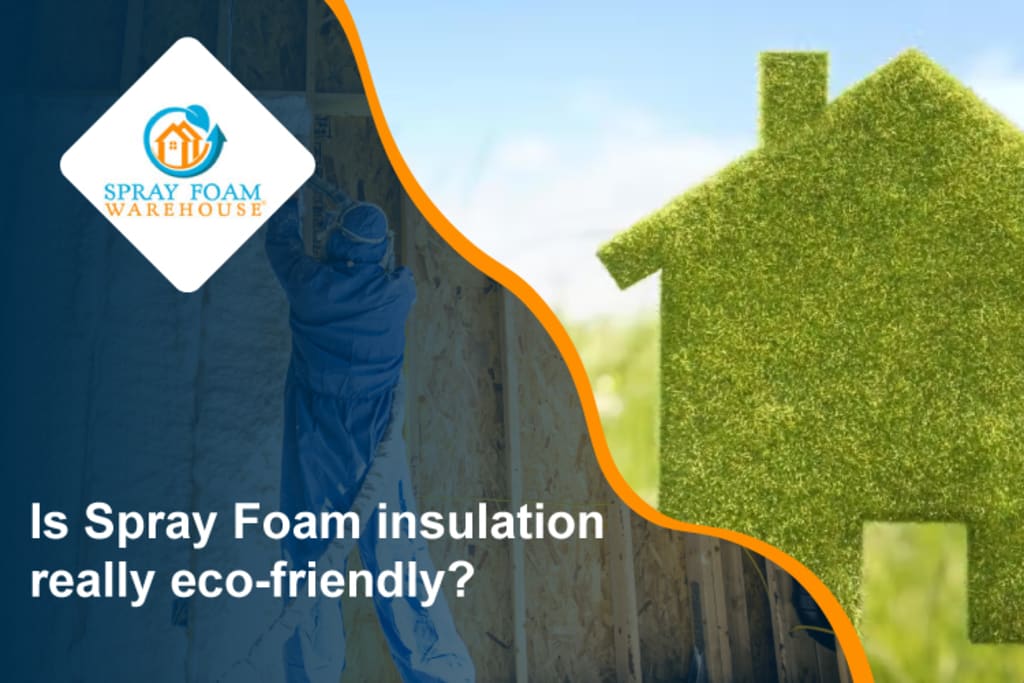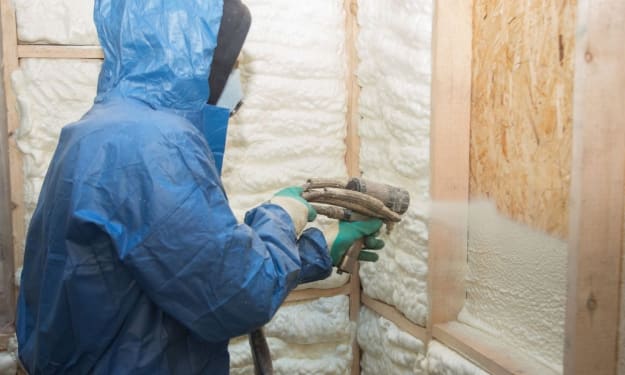Is Spray Foam insulation really eco-friendly?
Spray foam insulation

Consumers are demanding items that are healthier and pose fewer risks to themselves and the environment. Building materials with reduced off-gassing and lower VOCs are the first step toward better indoor environmental quality. With an eco-friendly spray foam insulation method that is ahead of its time, you can get leading insulation for your buildings. Spray foam insulation means consumers are demanding items that are healthy and few risks for the spray foam insulation. If you are planning to build a new home or remodel in the UK in the coming years, consider either of these green residential insulation options to keep your home healthy and safe and get detailed ideas about spray foam insulation cost in the U.K.
a. Sheep’s Wool
The compressed wool fibers create thousands of microscopic air pockets, with the outer layer repelling water and the inner layer absorbing moisture. This aids in the generation of heat while also reducing condensation, keeping your property warm during the winter & cold during the summer.
b. Aerogel
This man-made fabric is 90% air, but the heat has a hard time passing through aerogel, making it ideal for insulation. Aerogel was created as a result of the process, which involves extracting the fluid from silica under high temperature and pressure.
c. Thermal Cork
Because the end product is manufactured from the bark of trees of oak, this alternative has a less carbon footprint. It is organic, renewable, recyclable, and biodegradable, as well as noise adjustment and toxin-free.
d. Cellulose
If you want to reduce the number of contaminants in your home, cellulose is a wonderful option. It is safe to install because it is made from recycled newspapers and other papers. Because you're using this type of insulation, the newspaper in your walls won't end up in a landfill, releasing damaging greenhouse gasses.
Types of Spray Foam Insulation

a. Low-Density Open-Cell Spray Foam Insulation
Light-density open-cell SP is a moderately rigid foam with a sponge-like texture that is commonly referred to as half-pound foam. This SPF stretches after installation, based on small, porous, and open cells that are flooded with carbon dioxide. It can fit most fissures because it expands following applications. This substance adheres to uneven surfaces to create an airtight seal. It has the additional benefit of being malleable. Buildings can compress and expand over time as the weather changes. It twists and adapts with each and every stretching due to its flexibility, reducing any need for reinstallation.
b. High-Density Closed-Cell Spray Foam Insulation
Because it is denser than open-cell spray foam, it is commonly referred to as two-pound or 2 LB foam. It has a better Thermal Resistance value and is definitely stiffer. Because of its stiffness and weight, it is more powerful than open-cell spray foam insulation cost UK at acting as both a vapor and an air barrier. It has the additional benefit of increasing the tensile stability of ceilings and walls. Effective insulation can help you save money on your energy bills while also protecting your home from the elements. Insulation services have been provided in the U.K for over a century.
Spray Foam Insulation Advantages
a. No more Allergens
One of the advantages of spray foam insulation is that it greatly hampers the quantity of pollen and allergens that enter the home through the walls. The air cannot infiltrate the walls since the foam penetrates gaps and crevices, as it can with other forms of insulation. Those who suffer from pulmonary allergies or respiratory disorders will benefit from minimizing the quantity of allergens that enter the building. Boat insulation cost UK in offices makes employees cheerful.
b. Hamper the Growth of Mildew
Moisture cannot enter your structure through the walls of either open-cell or closed-cell foam insulation. Despite the fact that both kinds of foam prevent condensation, closed-cell foam insulation acts as a barrier against significant amounts of water
c. Enhances the Strength of Your Walls
Every structure is constructed in accordance with a code that necessitates the walls to meet a minimal load-bearing standard in order to keep the structure together. The minimum standard, on the other hand, does not take Mother Earth into account. The addition of a protective coating to the walls can raise the worth of your property.
Disadvantages of Spray Foam insulation
a. Spray foam insulation often does not completely fill all available cavities.
b. Some homeowners may experience water damage as a result of spray foam insulation.
c. Spray foam insulation might shrink in some cases.
d. It may fall short of the required R-value.
e. Installing spray foam insulation is more expensive than alternative solutions.
But the benefits and drawbacks of spray foam insulation attempt to balance the costs and lifetime of the product with the hazards of poor installation. Experienced professionals can install this device swiftly and effectively in a home, providing energy savings for generations to follow.
About the Creator
sprayfoamware house
Spray Foam Insulation is quickly becoming the main choice when it comes to home improvements in the UK. It is one of the best insulating material in the world, and it has excellent thermal, acoustic and hydro-insulating characteristics






Comments
There are no comments for this story
Be the first to respond and start the conversation.